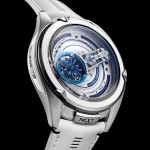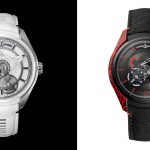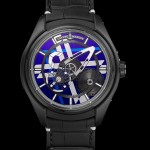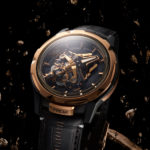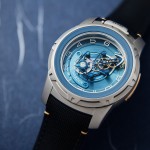The Ulysse Nardin Freak – The Saga of a Scientific Timepiece Part II
The escapement advancements in a landmark watch.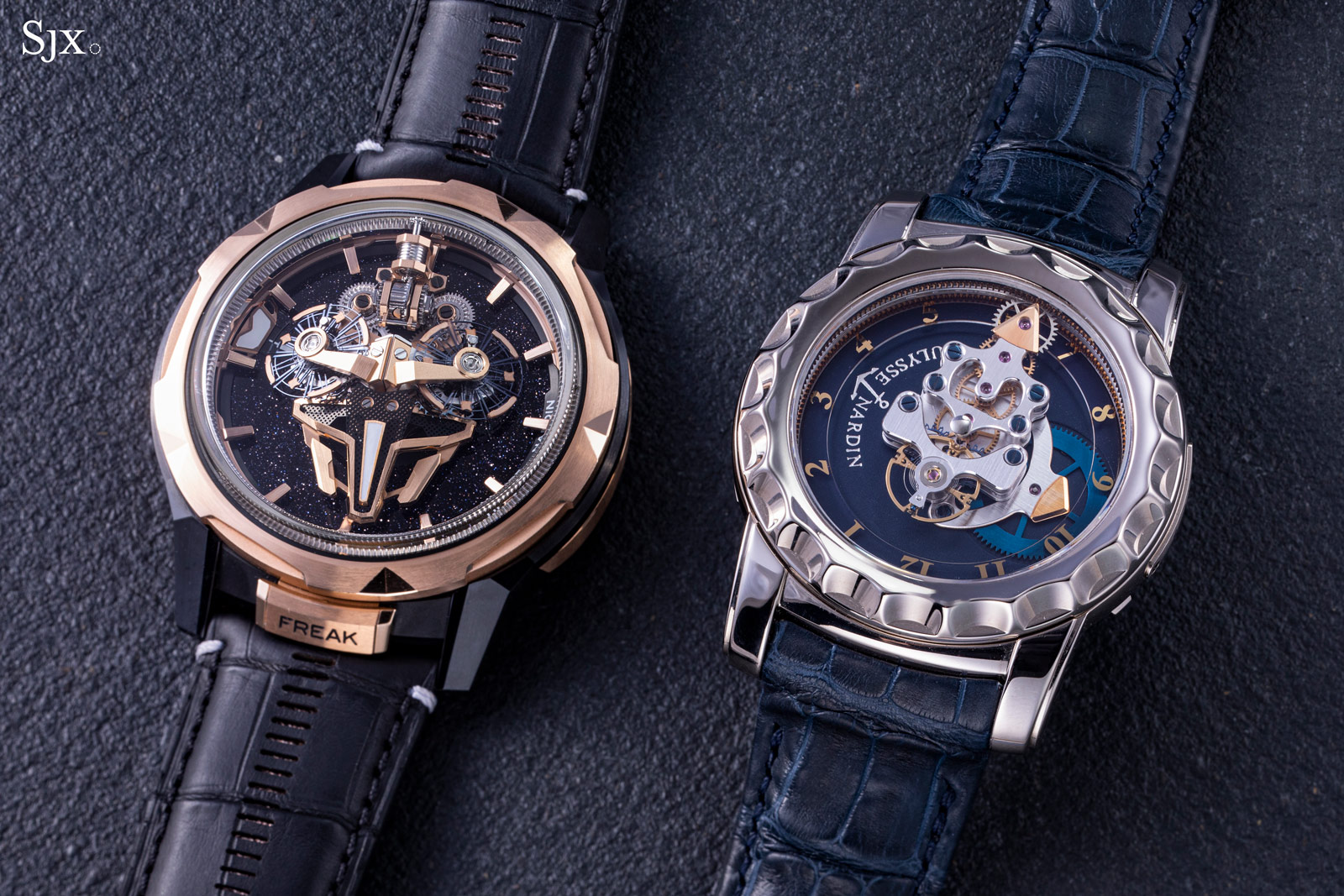
Having explored the origins of the Ulysse Nardin Freak, from its concept by Carole Forestier Kasapi to its realisation by Dr Ludwig Oechslin, we now turn to the Freak’s more recent innovations, starting with the Dual Ulysse Escapement.
[This story explains the evolution of the unique, high-performance escapement of the Freak. Part I, covers the origins of the Freak, from its conception to realisation, as well as its distinguishing characteristics, namely the inventive movement construction and innovative escapement. Part III details the history of silicium, the proprietary Ulysse Nardin silicium hairspring, and the patented Grinder rotor.]
A new and improved version of the Dual Direct escapement in the original 2001 Freak, the Dual Ulysse made its debut in 2005 inside the Freak 28’000 V/H, colloquially known as the Freak 2.
Slightly larger than the original model but otherwise very similar, the Freak 2 operated at 28,000 beats per hour (4 Hz), a higher frequency than the 21,600 beats per hour (3 Hz) of the original Freak. One of the factors which made possible the increase in frequency was the revised escapement christened the Dual Ulysse Escapement.
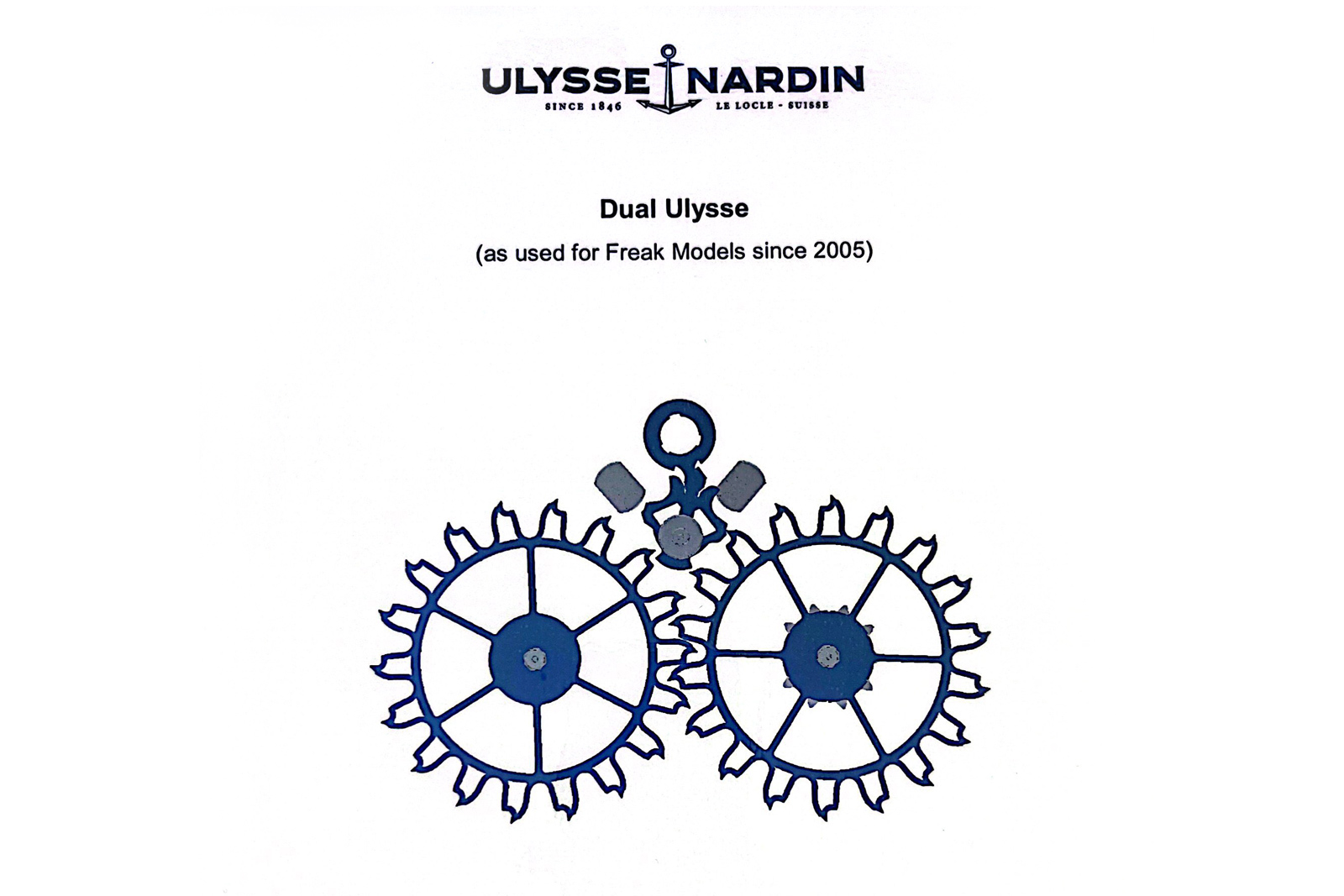
A diagram showing the key parts of the Dual Ulysse Escapement. Image – Ulysse Nardin
The Dual Ulysse Escapement
Another creation of Dr Oechslin’s, the Dual Ulysse departs from the classical natural escapement à la Breguet that the original Dual Direct Escapement was based on, but it still bears some resemblance to its predecessor. However, as the name subtly suggests, the Dual Ulysse doesn’t impart direct impulse to the balance, instead the lift is accomplished through an intermediate lever that links the escape wheels to the balance. In this regard, the interaction between the balance roller and lever is virtually indistinguishable from that of the conventional Swiss lever escapement.
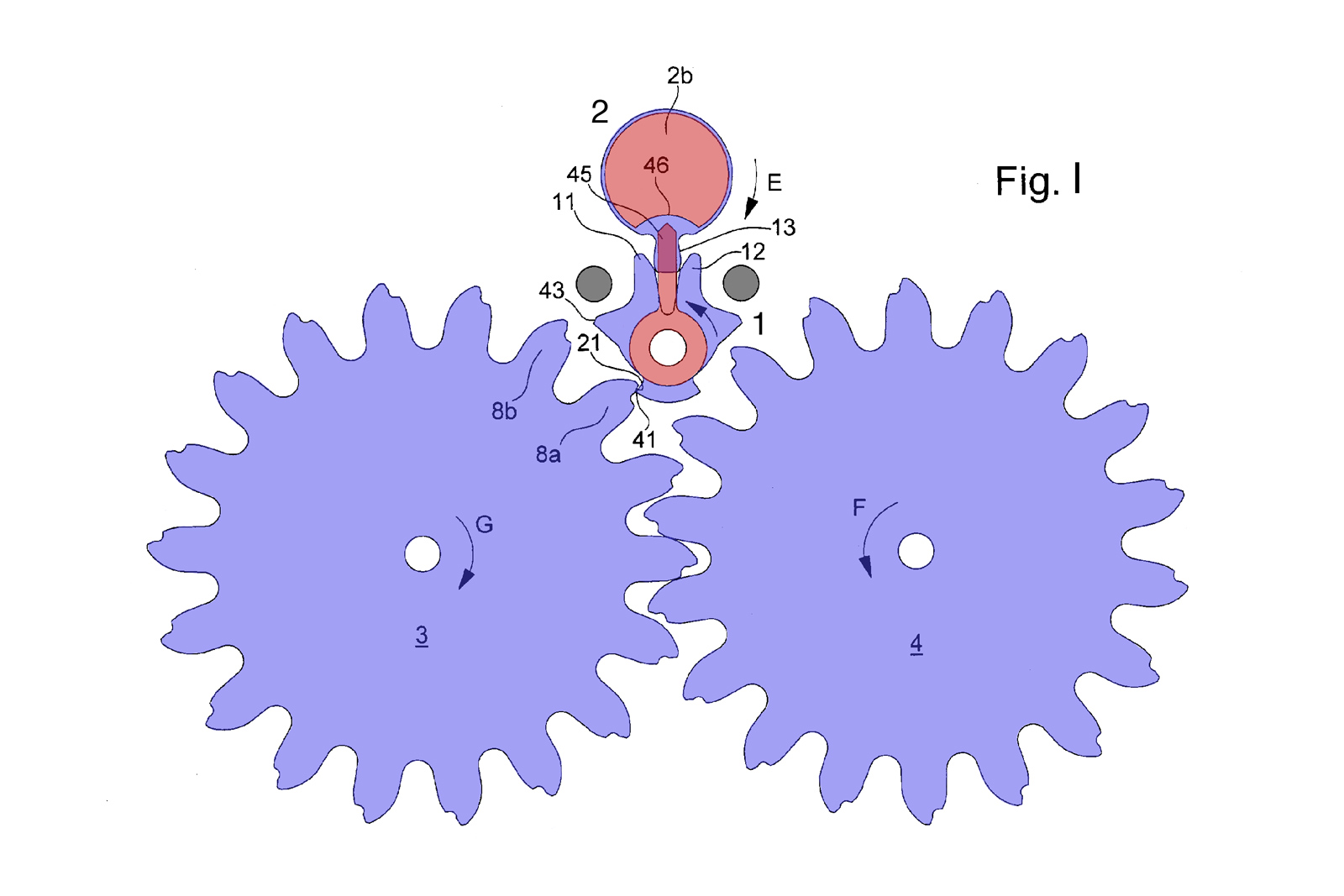
Figure I shows the Dual Ulysse in an idle position. The two escape wheels (3 and 4) each feature 18 identical teeth. Gone are the distinctive flat tops of the teeth, in fact the gear profile could almost pass as ordinary, if not for the tiny hooks on the tip of each tooth. As it will be revealed later, these hooked tips are essential to the impulse and locking phases, as they are meant to interact with the central lever. The lever has an unusual shape, modelled to engage perfectly, like jigsaw, with the escape wheels and balance roller.
The roller 2 is centred by a conventional balance hairspring assembly (not shown) and is engaged with lever 1 through its fork (defined by the two prongs 11 and 12). On a different level, the safety roller 2b (in red) allows the safety dart 45 to freely pass in the notch 46 – much like a conventional Swiss lever safety device. The lever is kept in a neutral stance relative to the twin escape wheels 3 and 4, which are themselves shown in an arbitrary position.
In Fig. I, one hooked tooth idly touches the lift plane 41 of lever 1. When the mainspring is wound, the two geared escape wheels start turning in opposite directions (marked G and F, respectively), with one tooth of wheel 3 pushing the lever counterclockwise.
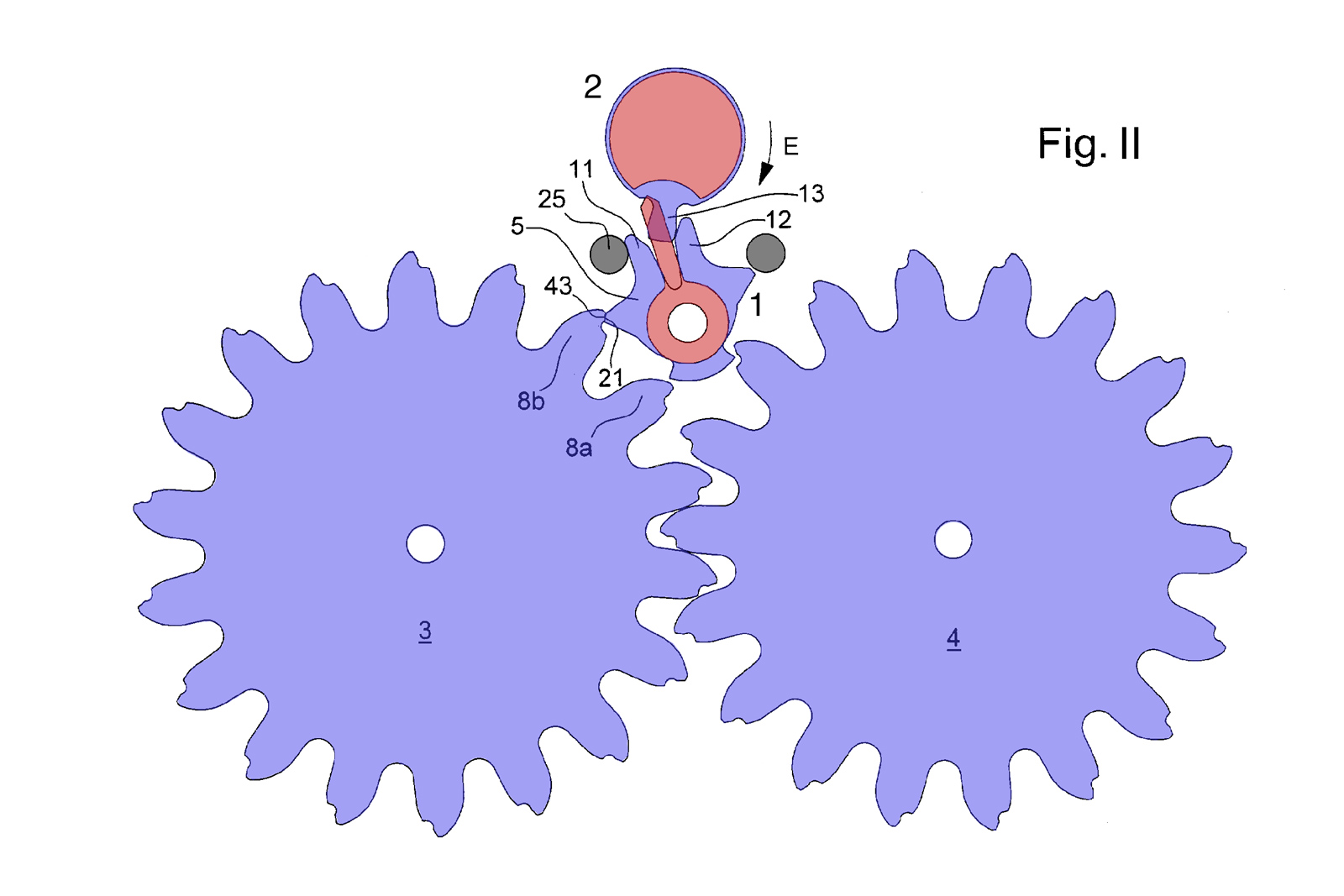
The result can be seen in Fig. II, where lever 1 is rocked against one banking pin. The locking component 43 can be seen acting on wheel 3, effectively stopping its motion. At the same time, the impulse pin 13 of the roller is pushed clockwise by the lever fork, initiating the oscillation of the balance wheel. The oscillating organ is thus set on its oscillatory motion, while the escapement components are locked in place.
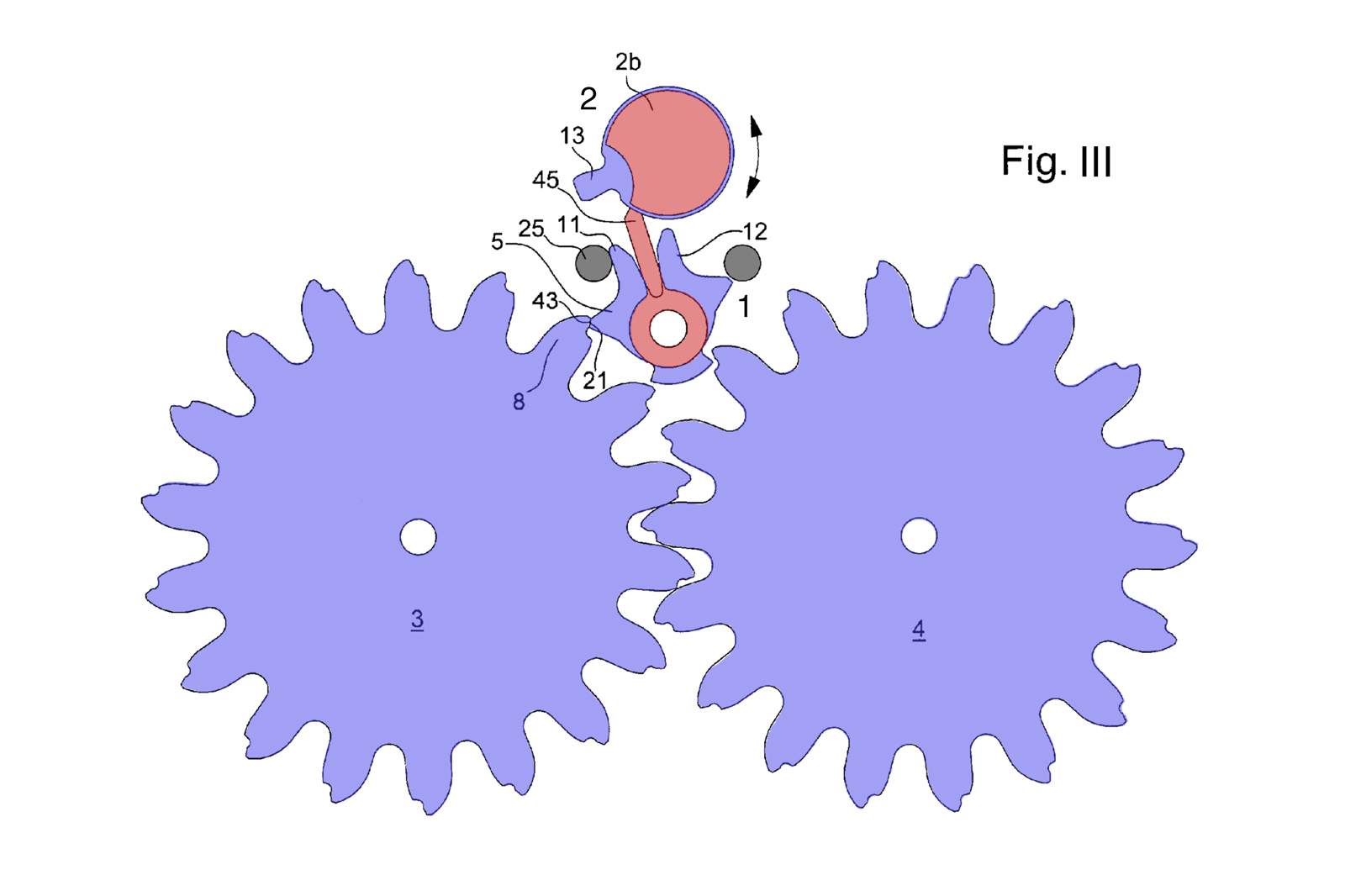
Figure III shows the roller running through its supplementary arc and eventually swinging back to its equilibrium point, towards lever 1. The safety dart and roller are set to prevent any premature unlocking of the lever, as the dart 45 cannot pass through 2b.
Fig. IV shows in detail the unlocking phase of the Dual Ulysse escapement: lever 1 is lifted from the hooked tip of the tooth 8, setting the two escape wheels free. As they turn, tooth 10a of wheel 4 is bound to push into lever 1, providing indirect impulse to the balance; tooth 10b is then set to latch into the lever. The escapement will again be locked and the balance left to freely oscillate.
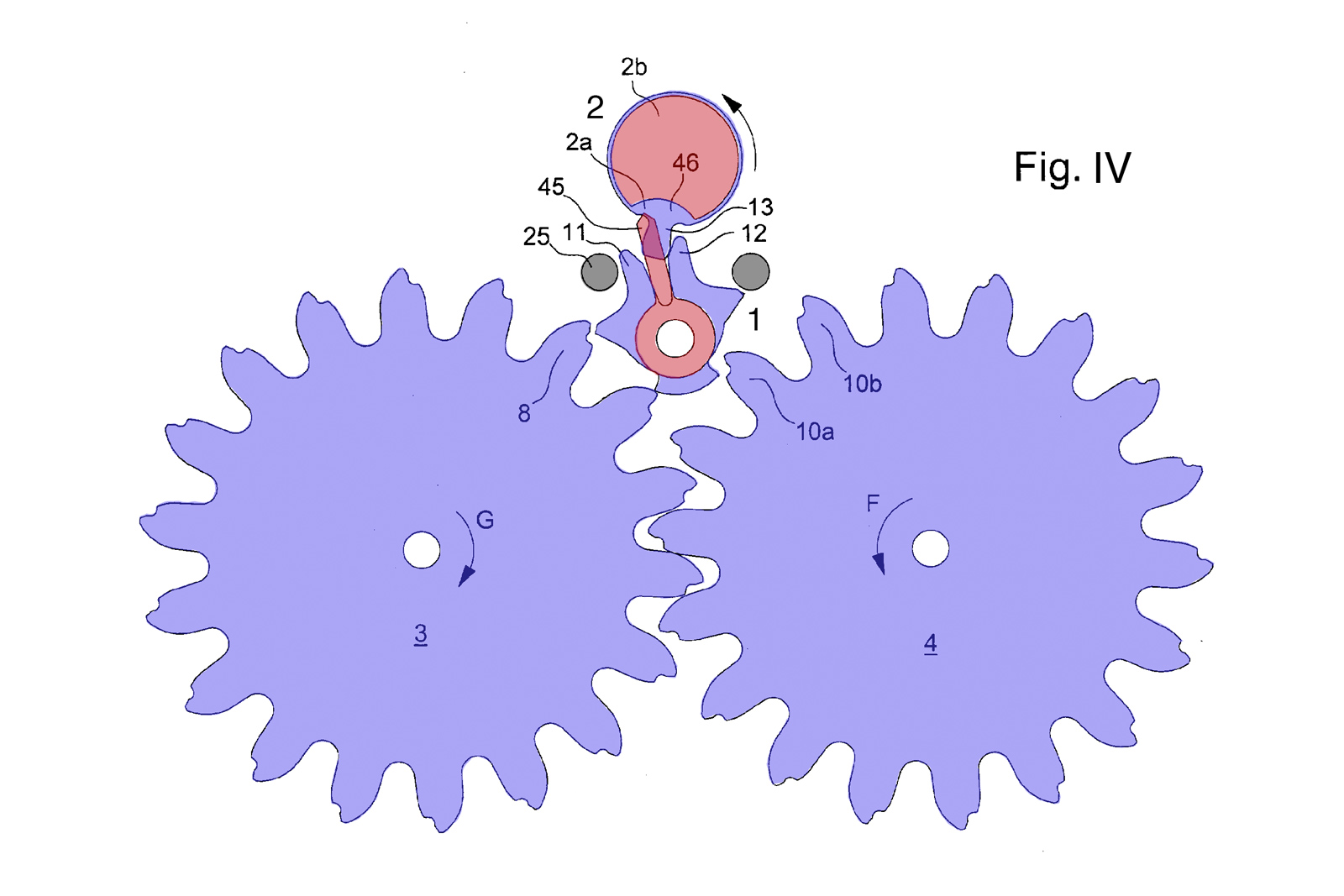
The interaction shown in Fig. IV best illustrates the improvements that made the Dual Ulysse more reliable than its predecessor. Firstly, there is the small but noticeable gap between the newly unlocked tooth tip and locking face of lever 1. The gap signifies that there is some kind of draw implemented within the escapement’s geometry, as the escape wheel suffers from a slight recoil when unlocked, fractionally rebounding from the lever.
Secondly, the impulse coming from the active escape wheel doesn’t seem to take place during or immediately after unlocking. Escape wheel 4 (while suffering from recoil) has to catch up considerably with lever 1, before acting on its impulse face. This means that impulse is given very near to the stationary point of the balance oscillation, an effect highly desirable in all escapements. Put another way, the closer an impulse is given to a pendulum’s equilibrium point, the less disturbed its natural oscillation is.
Equipped with banking pins, draw effect and the proven safety dart and roller, the mixed-function lever of the Dual Ulysse is secure in its action, comparable even to the no-frills Swiss lever. There is very little chance of jamming, as the geometry is well thought out and the components of ion-etched silicium guarantee tight production tolerances. Curiously, some watchmakers claim that acoustic time-graph machines are able to reliably read this escapement’s beat and rate – which was not possible for the Dual Direct Escapement – as its sound signature is very close to the Swiss lever.
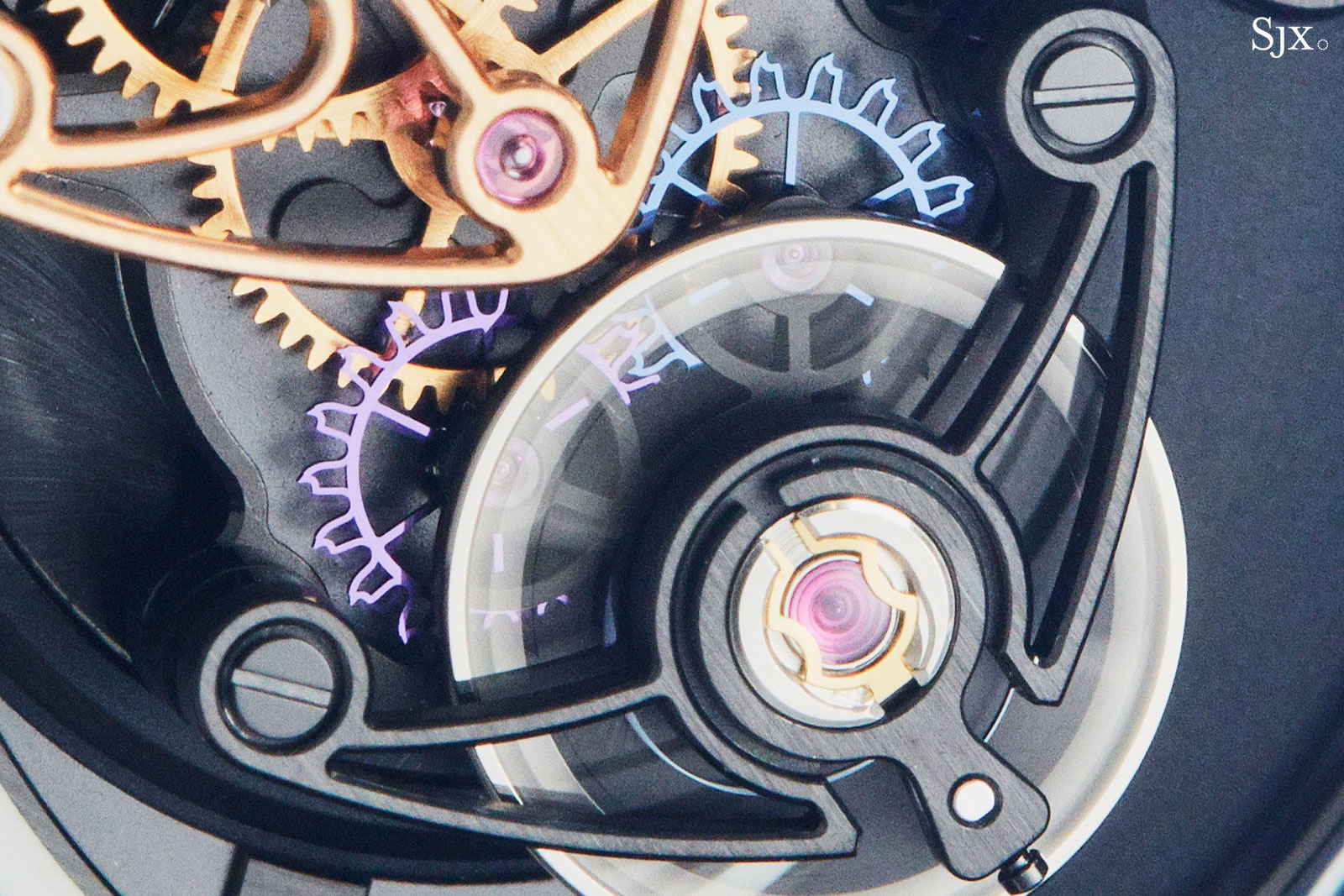
Going faster by slowing down
This fundamental reworking of the Freak escapement meant it could function reliably with a higher frequency balance wheel. Consequently, the default frequency of the Freak movement rose to the industry standard of 4 Hz in 2005 with the Freak 2. This was made possible by equipping the escape wheels with full tooth sets, instead of only five active teeth per wheel as was the case with the Dual Direct.
With a 4 Hz balance, each of the mirrored escape wheels advance by one tooth spacing each vibration (or 20° of travel, resulting from 360° divided by 18 teeth). One complete oscillation of a balance wheel is made up of two vibrations, forwards and backwards. A frequency of 4 Hz is equivalent to four oscillations per second, or eight vibrations.
Eventually, this accounts for 160° of escape wheel travel each second, suggesting a velocity of 4/9 turns per second. Compared to the faster 3/5 turns per second of the escape wheels in the Dual Direct, the more refined Dual Ulysse operates at a 35% slower velocity. It might not seem that much of an improvement, but bear in mind that a 4 Hz balance beats some 33% faster than its 3 Hz equivalent. That means the Freak 2’s balance wheel was speed up by roughly the same percentage that its escapement was slowed – a most laudable feat.
Another positive of the Dual Ulysse is the low lift angle of 36°, whereas the Dual Direct is estimated to have used a large 70° lift angle. The less an oscillating balance is disturbed by external interactions (escapement lift angle in other words) the better it keeps time, as the balance can follow through with its natural vibration. In short, a lower lift angle is superior to a larger one.
Swiss levers usually function with a larger, but bearable, 52° lift angle, although the tendency in recent years is to go for a reduced 49°. In comparison the total escaping angle (another term for lift angle) is low as 36° in dead-beat, detent escapements. The George Daniels independent double-wheel escapement, which is somewhat similar to the Dual Ulysse, allowed for a 36° lift angle.
These numbers suggest the Dual Ulysse is a potent escapement from a chronometric point of view. A testament to that was the Ulysse Nardin Anniversary 160 limited edition launched in 2006. An egg-shaped watch, it was equipped with the C.O.S.C-certified cal. 160 featuring the Dual Ulysse escapement, and a creation the brand’s then-owner, Rolf Schnyder, was particular proud of.
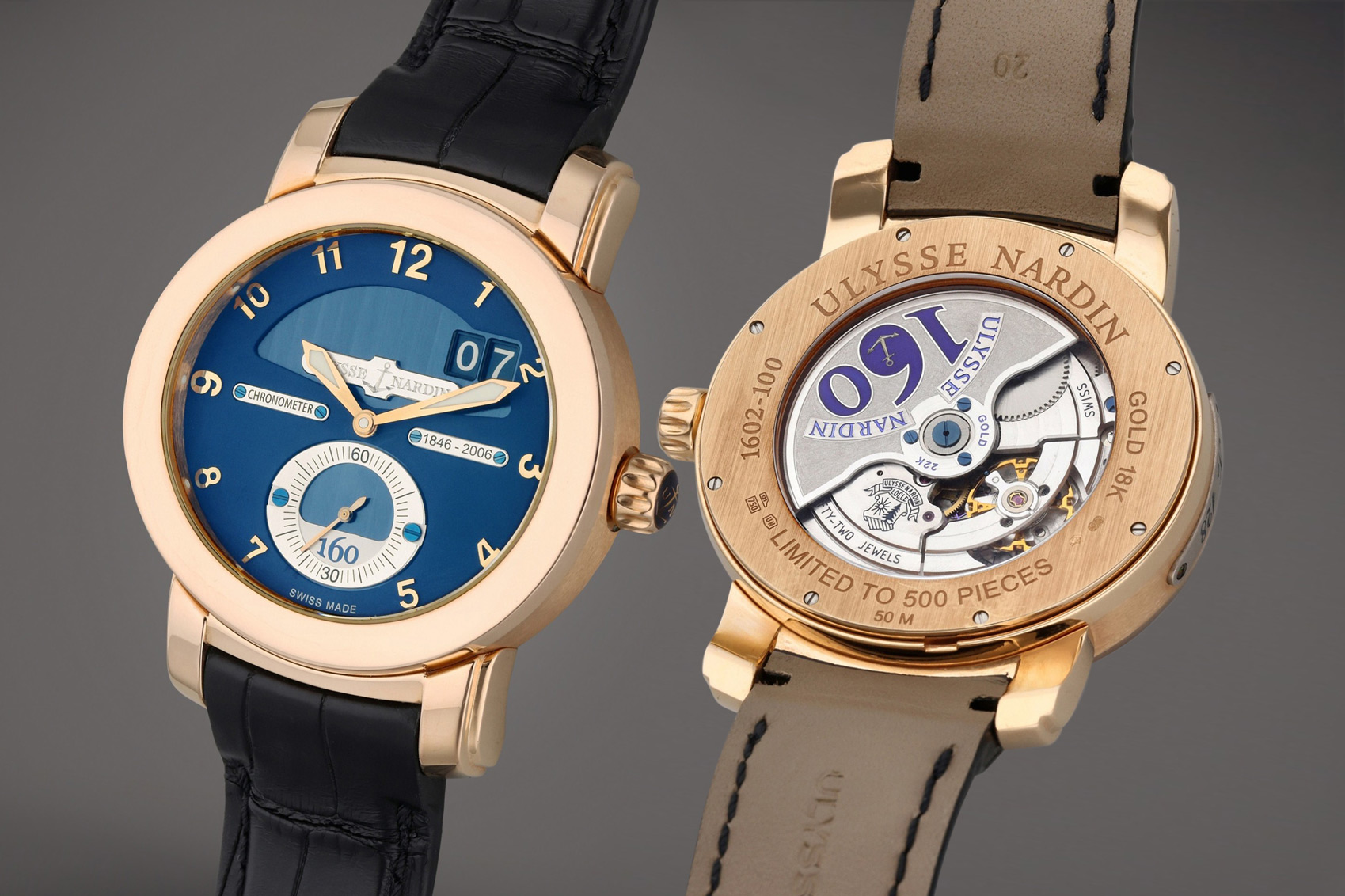
The Ulysse Nardin Anniversary 160 and its cal. 160. Image – Sotheby’s
The Dual Ulysse, however, did inherit one of the weakness of the Dual Direct, one inherent to all non-independent double wheel escapements, the periodical lack of tension in the driven wheel. As discussed earlier, this can result in slight flutter and uneven impulses from the driven wheel, but the precise DRIE manufacturing process for silicon wheels and complete tooth profiles mitigate the issue, at least in part.
Beyond the Freak, the Dual Ulysse escapement marked a new era of movements for Ulysse Nardin, as the brand started exploring the proprieties of silicium, especially the way it can be easily formed in complex, quasi-two-dimensional structures. This stems from the fixed thickness of a silicon wafer, limiting its utility for true three-dimensional components. But the third dimension aside, manufacturing silicium parts was almost akin to drawing on a blank sheet of paper, with possibilities limited only by the creator’s imagination, yet boasting ideal tolerances.
Back to top.

